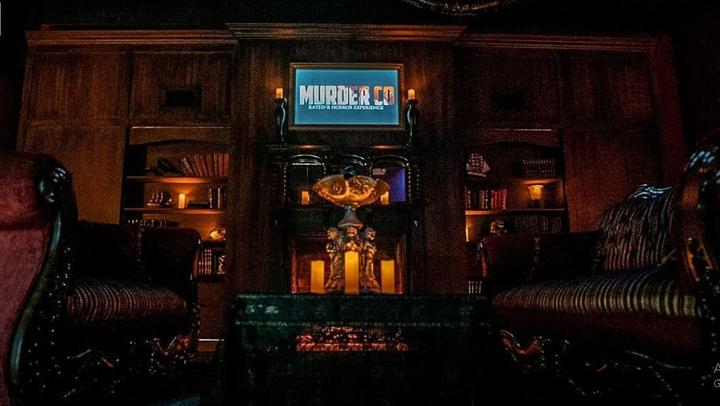Delighting Escape Room in Minneapolis Mall of America-- Book Currently
Team Techniques: Just How to Work together Successfully in an Escape Space
Navigating the intricacies of an escape space requires greater than mere excitement; it needs a well-coordinated approach based in clear interaction, strategic function tasks, and experienced time monitoring. Teams need to proactively pay attention to each member's insights, assign roles that align with individual toughness, and keep normal check-ins to guarantee focus and avoid redundancy. By cultivating an atmosphere that values communication and versatility, groups can considerably enhance their performance and success rates. The subtleties of these strategies can change the experience, but exactly how exactly can they be applied to make the most of the potential for success?
Establish Clear Communication

To help with clear interaction, it is necessary to designate a main point of call for info dissemination. This role entails summarizing searchings for and proposed approaches to guarantee everyone continues to be on the same web page. Additionally, embracing an organized technique to discussions can stop disorderly exchanges. Brief, concentrated updates from each team member can maintain the group informed without overwhelming them with info - best escape room.

Appoint Functions Tactically
While clear interaction sets the structure for reliable teamwork, assigning roles tactically makes sure that each team member's strengths are utilized efficiently. In a getaway space circumstance, the time-sensitive and intricate nature of obstacles demands an efficient method to job delegation. By recognizing and leveraging individual competencies, teams can maximize their analytic abilities and enhance overall efficiency.
First, assess the unique skills and features of each participant. For example, someone with a keen eye for information could master discovering hidden items, while a sensible thinker might be better suited to resolving puzzles - best escape room. It's equally important to have a leader that can oversee progress, handle the timeline, and make crucial calls when essential. This function typically requires strong organizational and interpersonal abilities.
2nd, make sure that functions are adaptable and adaptable. As new obstacles emerge, the group must be able to pivot, reapportioning jobs as required. This adaptability aids keep momentum and stops bottlenecks that could take place as a result of rigid duty assignments.
Ultimately, a check my blog strategic technique to duty task not only makes best use of the toughness of each employee but also promotes a cohesive atmosphere, driving the group in the direction of a successful escape.
Use Diverse Skills
Identifying and utilizing the diverse skills within your team can considerably elevate your efficiency in a getaway area. Each staff member brings unique staminas to the table, and properly leveraging these abilities can speed up analytical and enhance overall efficiency. For example, an employee with strong logical skills might excel at analyzing complicated codes or patterns, while another with keen observational capacities might swiftly spot surprise hints that others may ignore.
Motivate team participants to voice their insights and concepts without delay, ensuring that all possible remedies are thought about. In addition, appointing jobs that straighten with each participant's staminas can protect against bottlenecks and make sure that progress is continuous.
Moreover, variety in abilities frequently translates to diversity in believing styles, which is indispensable in a retreat room setting. While some difficulties may require sensible reasoning and accuracy, others could take advantage of creative and association of ideas. By recognizing and leveraging this diversity, groups can deal with a broader variety of obstacles better, thus enhancing their possibilities of an effective retreat.
Manage Time Efficiently

First, designate first mins for a fast study of the room. Identify visible challenges and divide jobs based upon group members' staminas, guaranteeing that no one is idle. Set interior time checkpoints to review development periodically; for example, purpose to have half the challenges addressed by the mid-point of the game. This method can assist maintain the group concentrated and avoid time from escaping undetected.
Additionally, prevent tunnel vision. If a puzzle is taking too long, turn team members or carry on to one more challenge, returning later on with fresh viewpoints. Interaction is paramount-- keep everybody upgraded on resolved puzzles and remaining tasks to stay clear of redundant initiatives.
Finally, utilize any tips or hints sparingly however tactically - best escape room. Knowing when to request assistance can save beneficial time. By sticking to these time management concepts, groups can significantly enhance their chances of a successful and pleasurable retreat room experience
Debrief and Show
Representation is a crucial aspect of group development and renovation in the context of retreat rooms. Once the difficulty is finished, whether efficiently or not, it is essential for the team to take part in a structured debriefing session. This process allows employee to analyze their performance, determine staminas, and description pinpoint areas for improvement.
Start the debrief by reviewing what went well. Highlight details circumstances of effective communication, problem-solving, and partnership. Recognizing these favorable habits strengthens them and encourages their rep in future challenges.
Next, attend to the challenges encountered. Discuss minutes of confusion, miscommunication, or ineffective approaches. Encourage an open and constructive dialogue where group members can share their perspectives without anxiety of criticism. This cultivates a society of constant enhancement and knowing.
Final Thought
Finally, successful partnership in a retreat space is based upon clear interaction, tactical role projects, the effective application of varied skills, and efficient time administration. Routine check-ins and structured debriefings are essential for maintaining focus and cultivating continual improvement. By producing a cohesive and flexible team setting, the possibility of successfully addressing challenges and achieving the goal of getting away the area is dramatically boosted. This technique not just ensures success yet also promotes cumulative development and understanding.